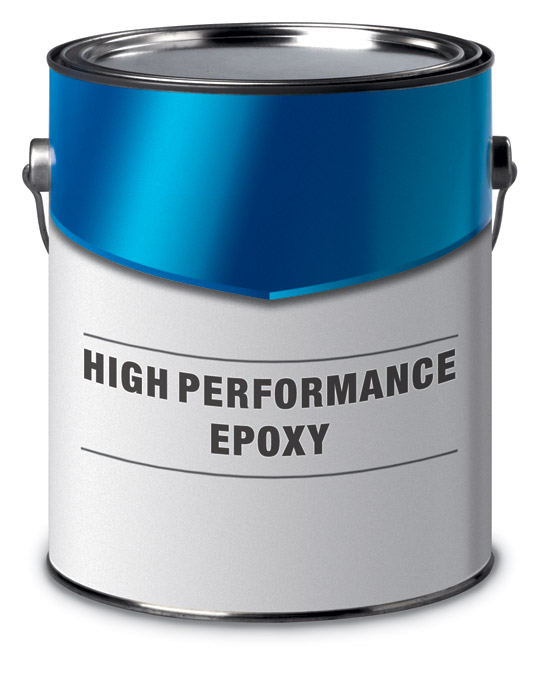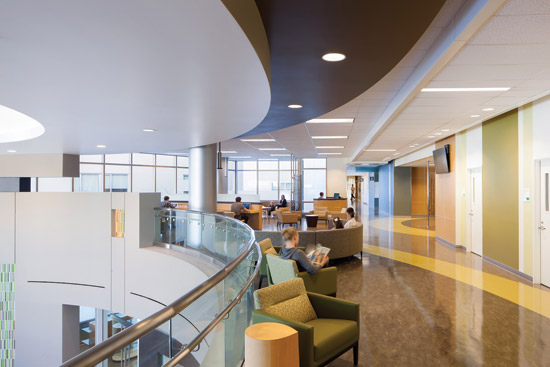New Coatings to Help Support Cleaner and Fresher Healthcare Environments
Traditional Coatings Can't Withstand the Scrub
Unfortunately, the coating typically found on acute-care facility walls and doors does not have the chemical resistance or durability to withstand the abuse of these new disinfectants or the more rigorous cleaning schedule to which they are subjected. These harsher chemicals, used more frequently and with greater friction, more quickly erode the traditional coating. The damage in some areas is so extensive that the coating is entirely removed, exposing the drywall underneath. Once holes have been created in the coating, the aesthetic of the space is immediately downgraded from professional and healing to downtrodden and shabby. This is not an impression healthcare facilities can afford to make.
Until recently, the options for restoring the aesthetic of the acute-care healthcare space were somewhat limited. The holes could be covered up by strategically placed prints, calendars, whiteboards, etc., creating a veritable patchwork of items on the wall. While this approach may not convey shabby, it certainly does not convey organized. More commonly, the defiled wall or door would be repainted. However, even repainting the space offered only a short-term solution, because the underlying problem was that the coating was not strong enough to withstand the new cleaning regimen. Adding a new coat of paint addressed the immediate eyesore, but without changing the cleanser or cleaning method, it was just a matter of time until the coating failed again.
New Chemical-Resistant and Abrasion-Resistant Coating
 |
This epoxy-based wall coating creates a chemical-resistant and abrasion-resistant surface that will withstand the more rigorous cleaning regimens now used in hospitals. Photo courtesy of The Sherwin-Williams Company |
Acute-care facilities needed a more durable wall coating that could withstand the new generation of disinfectants and a regular scrubbing. This better-suited coating would reduce the number of areas that needed to be repainted, without compromising the cleanliness or aesthetic appeal of the space. Luckily, a new, more durable, chemical-resistant and abrasion-resistant wall coating has been recently developed.
Advanced formula coatings are four times more durable than conventional wall paint. They are resistant to most commercial cleaners and withstand abrasion, impact, corrosion, and scrubbing better than standard wall coatings.
Epoxy is the substance that makes this new wall coating so tough. Epoxy is a thermosetting resin. It is often found in the high-performance adhesives used in the construction of aircraft, automobiles, boats, and other items where high-strength bonds are necessary. Epoxy is also present in tough coatings and laminates. Two-component epoxy paint is commonly used to cover industrial floors, because it is really hard and it sticks to the floor well. Now, epoxy-based paint is ready for the wall.
Some epoxy-based wall coatings create a chemical-resistant and abrasion-resistant surface that is ideal for the cleaner healthcare environment. Walls coated with epoxy-based paint will easily withstand the more potent disinfectants and rigorous scrubbing now being used to prevent the spread of HAIs.
This more durable paint enables hospitals to maintain the cleaner environments they need, without sacrificing aesthetics, and it benefits the bottom-line as well. More durable paint saves money by reducing the number of times a space must be repainted. Fewer repaints also reduce the total number of days that a space must be cleared out for maintenance. Less downtime increases the number of days that patient rooms can be occupied and surgical suites can be used every year, generating more profit for the hospital.
Specify an epoxy-based coating for walls and doors in patient rooms, surgical suites, laboratories, kitchens, foodservice areas, showers, and restrooms to accommodate more rigorous cleaning regimens, protect the integrity of the original aesthetic, and reduce downtime caused by repainting.
 |
Hospitals are using more potent cleaners more often on walls and doors in patient rooms, surgical suites, and common areas. Photo courtesy of The Sherwin-Williams Company |









